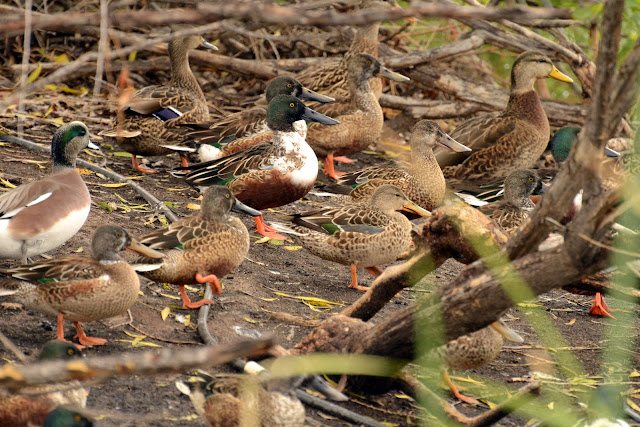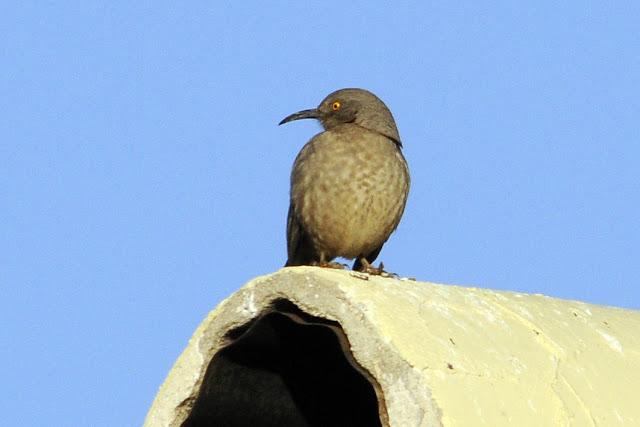Life-lister! Sweetwater Wetlands in Tucson, Arizona added more than a few new species to my life list. This was my very first Ladderbacked Woodpecker, for instance.
This shot of the Ladderbacked is admittedly a bit fuzzy, but is is a good depiction of the bird's unique markings. You can see why I didn't need any help with identifying this species!
I'm notoriously weak at identifying warblers, but my son tells me this is an Orange-crowned Warbler. The orange crown is rarely ever seen in real life, of course. This is one of many avian species named after generally invisible features, which adds to one's frustration when trying to establish a species ID.
This is a Yellow-rumped Warbler, or so I'm told. If it looks a bit different than the Yellow-rumped Warblers you are used to seeing in the Northeast, it is because there are two distinct subspecies of this bird (another cosmic joke intended to confuse novice birders!) This is an Audubon's Yellow-rumped Warbler as opposed to a Myrtle's Yellow-rumped Warbler. The chin and throat of the Audubon's Yellow-rumped Warbler is much yellower than the chin of the Myrtle's Yellow-rumped Warbler.

This is probably an Audubon's Yellow-rumped Warbler, too. It looks different than the one above because it is displaying it's "
mostly concealed and sometimes lacking" crown patch (description from
Peterson's A Field Guide to Warblers of North America). Does anyone else find all this a bit confusing? The worst part is that these are supposedly
easy-to-identify warblers. There were probably a bunch of other warblers at Sweetwater Wetlands, but all I know is that we saw a lot of little birds bopping around the place!
Here's a more familiar bird to someone from the Northeast - except maybe not so familiar? It looks
almost like the Northern Flickers I've seen, but where is the red patch on the nape of his neck? And shouldn't this guy have a black mustache instead of a red one? The reason this bird looks a bit different than the Flickers I'm used to seeing in Massachusetts is because this is a
Red-shafted Northern Flicker instead of a
Yellow-shafted Northern Flicker. When he is flying, you can see that the underside of
this bird's wings and tail are red rather than yellow.
This Flicker doesn't look exactly right to me, and I think there is just the slimmest of chances that this could be a different species altogether. The Gilded Flicker has more of a cinnamon crown, and maybe that's why this bird looks slightly different. I'm not sure I know what kind of Flicker we have here! Any ideas?

I'm also not sure what kind of hawk this is! I think my brain is overloaded with the huge variety of new species I saw on this trip west - and by the unexpected fact that some familiar species look a lot different out there than they do here. Some Red-tailed Hawks in Arizona and California have much darker faces than I'm used to, for instance. So feel free to let me know what species of hawk we have here - because I give up!

















































